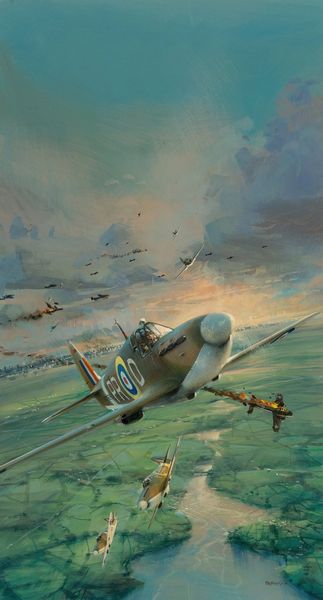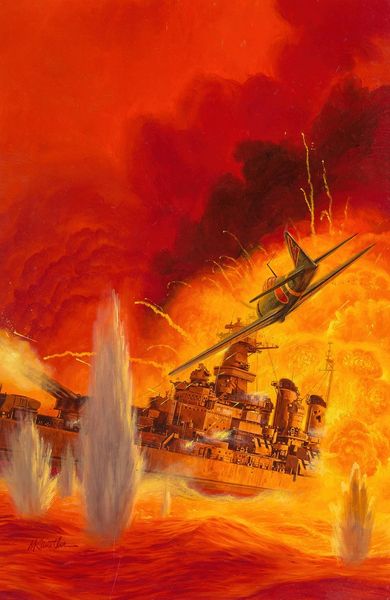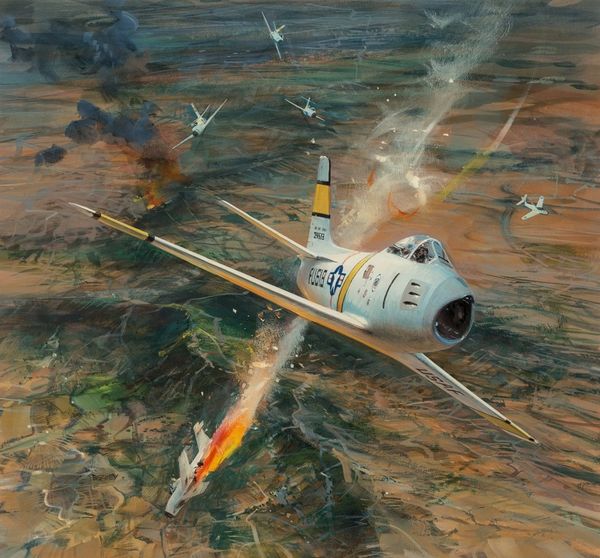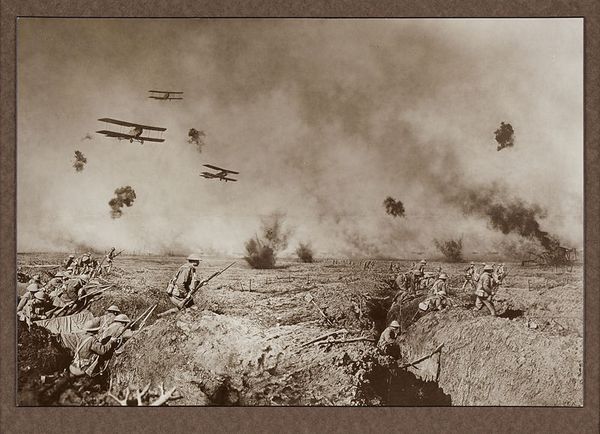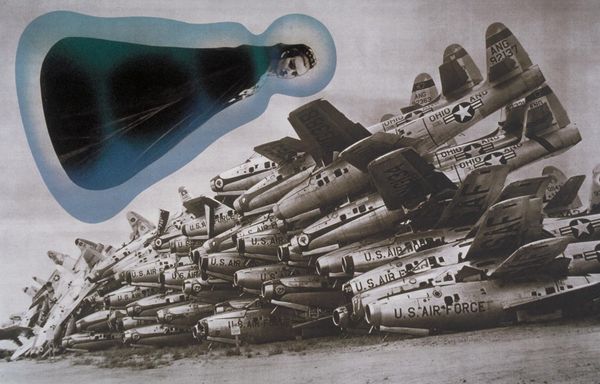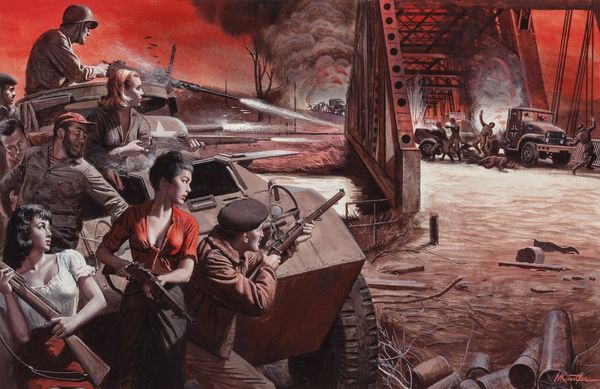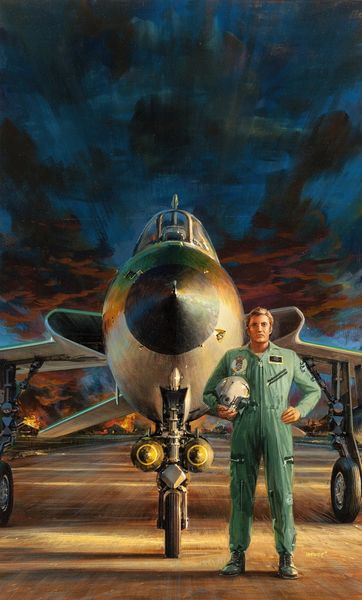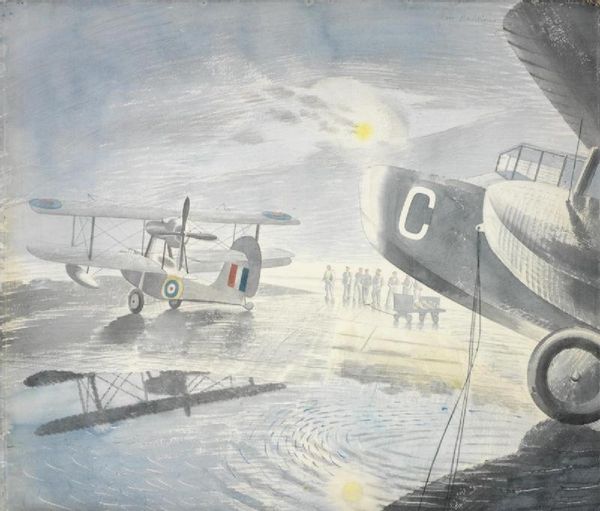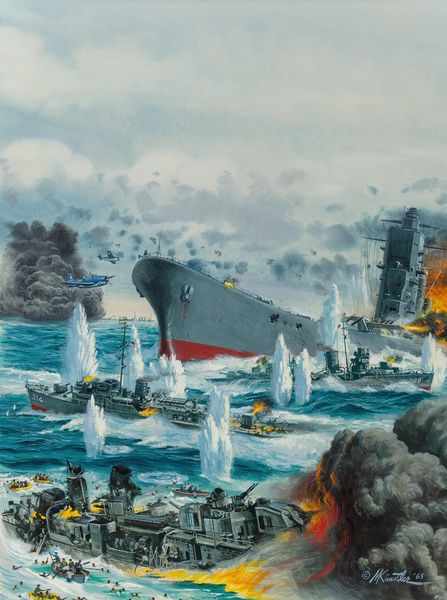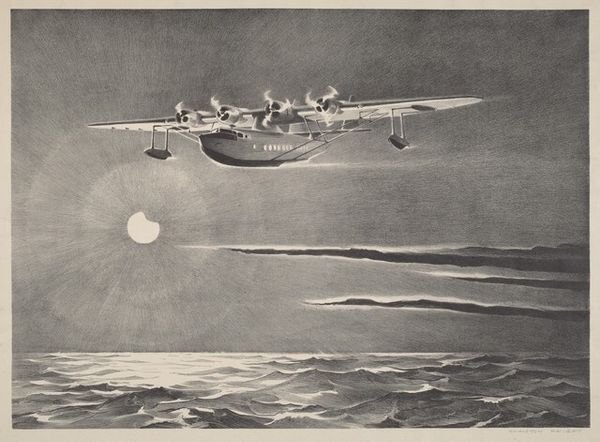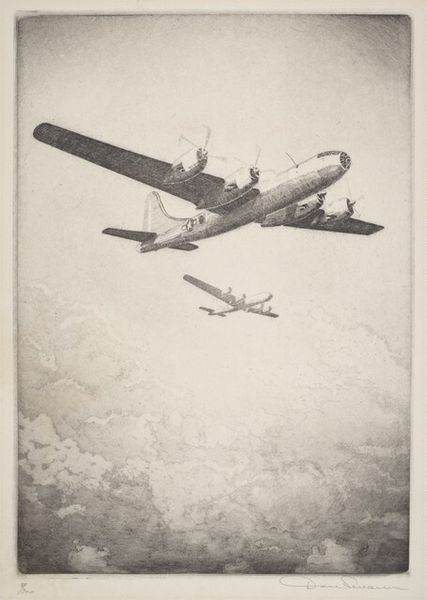
#
graffiti art
#
possibly oil pastel
#
oil painting
#
fluid art
#
acrylic on canvas
#
street graffiti
#
urban art
#
animal drawing portrait
#
portrait art
#
digital portrait
Copyright: Modern Artists: Artvee
Curator: This is "Bomb the Krauts, US GI’s are Gone" created in 1965 by Mort Künstler. Quite a provocative title, isn’t it? Editor: Provocative is one word for it. My immediate thought is one of controlled chaos. There's this sky-blue serenity in the backdrop, contrasting fiercely with the dark plumes of smoke and those unsettling scrawls on the rooftop. It creates a sort of visual dissonance. Curator: Yes, dissonance! It almost feels… juvenile, doesn’t it? In that harsh juxtaposition of war with what looks like playground taunts. But Künstler manages a painterly balance. Tell me, how do you read the rooftop graffiti within a broader sociopolitical narrative of the period? Editor: Well, in the context of 1965, with the Vietnam War escalating, we can view that graffiti as a manifestation of complex anxieties: the tail end of World War II rhetoric intermingling with this fresh wave of anti-establishment sentiment and a creeping disillusionment with US foreign policy. There's this really uneasy blend of patriotism and protest right there on that rooftop. Curator: An uneasy blend. Exactly. You know, looking at the formation of planes—there's almost a dreamlike quality to them despite the subject matter. They're so precisely rendered. But those figures fleeing on the ground lack… substance. Editor: That's it! There's a sense of dehumanization. The planes are these perfectly formed machines, almost heroic, while the people below are reduced to stick figures caught between jingoism and obliteration. I see this painting not only as a snapshot of its time, but also as an observation about how conflict erodes individual agency and morality. Curator: Beautifully said! And looking at Künstler's wider body of work, primarily celebrated for historical illustrations of Civil War scenes, one wonders what propelled him toward this subject, this treatment. Did he see it as an echo of past conflicts? Or something fundamentally new, something… uniquely corrosive about that specific moment? Editor: I suspect he's attempting to draw a through line, showing the perpetual recurrence of these impulses: the way nations dehumanize "the other," the psychological toll of warfare. In the end, that graffiti isn’t just about some forgotten conflict. It serves as a grim warning, scrawled across time itself. Curator: Yes, a warning indeed. "Bomb the Krauts, US GI’s are Gone"... heavy stuff. It sticks with you. Editor: Absolutely. I find myself pondering whose voices are amplified in times of war and, perhaps more importantly, whose voices are silenced.
Comments
No comments
Be the first to comment and join the conversation on the ultimate creative platform.
